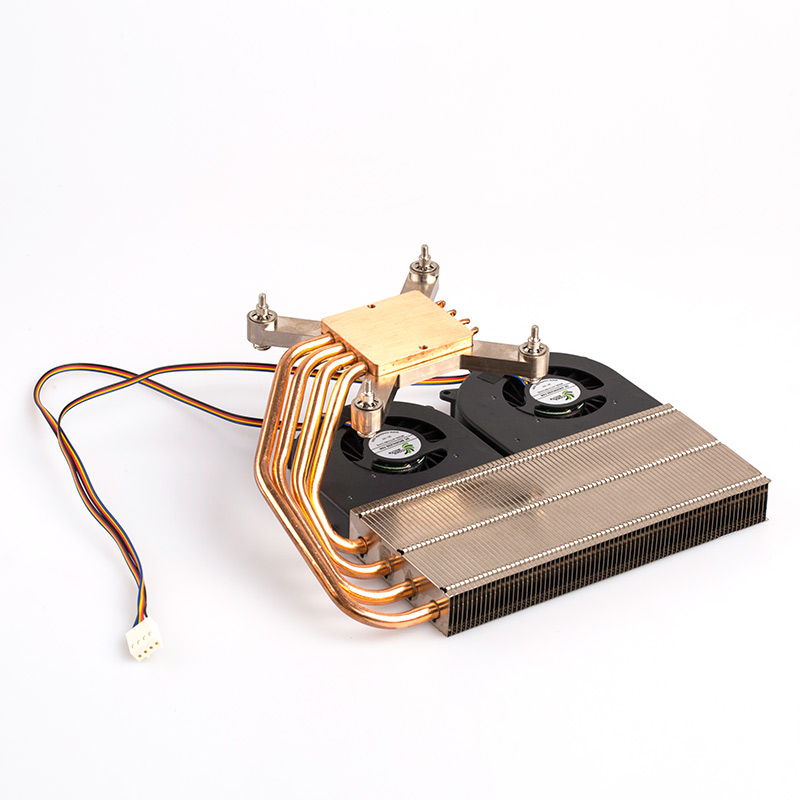

Views: 27 Author: Site Editor Publish Time: 2022-07-22 Origin: Site
Heat sinks are used in electronic equipment and components to provide the supplemental cooling needed to prevent components from overheating. These components are designed and optimized to ensure that electronic equipment operates within the temperature range provided by the manufacturer.
Heat sinks are designed with thermally conductive materials such as copper and aluminum, and they work by liquid cooling, natural convection, forced convection, or radiation heat dissipation. Thermal management requirements vary from application to application. Therefore, when custom a heatsink for a specific application it is important to think beyond the heatsink. Some important factors that should be considered include heatsink-level requirements, component-level requirements, system-level requirements, and chassis-level requirements.
Custom Heat Sinks: Key Considerations for Custom Heat Sinks
Heat sinks transfer the heat generated by an electronic component or assembly into the cooling medium. Heat is transferred from the higher temperature region (electronic components) to the lower temperature region (fluid medium) by conduction, convection, radiation, or a combination of these heat transfer methods.
The performance of this passive heat exchanger is determined by many factors, including the velocity of the coolant, the thermal conductivity of the material, the thermal interface material, and the method of connection.

1. Thermal resistance
Thermal resistance is the sum of the resistance to heat flow between the mold and the coolant. These heat flow resistances include the resistance between the mold and the component housing, the resistance between the housing and the heat sink (thermal interface resistance), and the resistance between the heat sink and the fluid in motion. The thermal resistance does not affect the inhomogeneous heat distribution, and it is not suitable for modeling systems that are not in thermal equilibrium.
Although the thermal resistance value is an approximation, it allows for modeling and analyzing the thermal characteristics of semiconductor devices and heat sinks. The analysis of different heat sink designs is used to determine the geometry and parameters of the heat sink that will achieve the maximum heat dissipation. Complex modeling of the thermal characteristics can be achieved by meshing the heat sink using 3D thermal resistance.
2. Materials
Heat sinks are designed using materials with high thermal conductivity, such as aluminum and copper. Copper has excellent thermal conductivity, resistance to microorganisms, biological contamination, corrosion resistance, and heat absorption. Its properties make it an excellent material for heat sinks, but it is more expensive and denser than aluminum.
Diamond has high thermal conductivity, making it a suitable material for thermal applications. Its lattice vibrations explain its excellent thermal conductivity. Composite materials such as AlSiC, Dymalloy, and copper-tungsten pseudo-alloys are also commonly used for thermal applications.
3. Heat sink arrangement, shape, size, and position
The flow of the cooling medium is greatly influenced by the arrangement of the fins on the heat sink. An optimized configuration helps to reduce the resistance to fluid flow, thus allowing more air to pass through the radiator. Its performance also depends on the shape and design of its fins. Optimizing the shape and size of the fins helps to maximize the heat transfer density. Modeling allows the performance of different fin shapes and configurations to be evaluated.
4. Heat Sinks: Electronic Heat Dissipation Efficiency
The heat sink receives heat from the electronic device and dissipates it into the surrounding coolant. The heat transferred by the fins to the cooling medium decreases with increasing distance from the bottom of the heat sink. Using materials with higher thermal conductivity and lowering the aspect ratio of the fins can help improve the overall efficiency of the fins. The following figure is part of the simulation results to study the temperature characteristics of the heat sink design.
5. Thermal Interface Materials
Surface defects, roughness, and gaps can increase thermal contact resistance and thus reduce the effectiveness of the thermal solution. These defects increase the resistance to heat flow by reducing the thermal contact area between the electronic components and their heat sink, thereby reducing the heat sink efficiency. Thermal resistance is reduced by increasing the interface pressure and decreasing the surface roughness. In most cases, these resistance reduction methods have limitations. To overcome these limitations, thermal interface materials are used. When selecting a thermal interface material for a given thermal application, the resistivity of the material, the contact pressure, and the size of the surface gap should be considered.
6. Heat sink mounting method
The thermal performance of a heat sink can be enhanced by selecting the appropriate method of attaching the heat sink to an electronic device or component. The selection process should consider the thermal and mechanical requirements of the thermal management solution. Standard heat sink attachment methods include bracket spacers, flat spring clips, epoxy, and thermally conductive tape.
Custom Heatsink Conclusion
Heat sinks are an essential component of most electronic assemblies, power electronics, and optoelectronic components. These passive heat exchangers dissipate the heat generated by electronic devices to ensure that they operate within limits specified by the manufacturer. Some of the critical factors that should be considered in heatsink design include thermal resistance, materials, heatsink configuration, heatsink size and shape, heatsink efficiency, heatsink connection methods, and thermal interface materials.
You can learn more about Heatsink's product types and our Heatsink customization services on our “Custom Heatsink” page. If you have a custom Heatsink need, don't hesitate to get in touch with us. Coolsolte is your most reliable heatsink manufacturer!